Puerto Rico Travel Notes
Jackson He
January 2022
1. Covid Rules
We knowingly went to Puerto Rico during the pandemic,
partly due to it being warm and therefore conducive to outdoor activities, and
partly due to it being a US territory—whatever the pandemic does, we have no
international borders to cross.
Puerto Rico, being almost a different country, does
have its own Covid restrictions. We were well-aware of it and prepared for it.
We brought our vaccination cards. We applied for and gotten our health QR Codes
on green backgrounds. And we got more masks than we could possibly need during
the trip, just in case.
But when we arrived at San Juan airport, we were told that
the green QR Code didn’t mean anything anymore. From the previous day, the rules
had changed, and we were supposed to get a negative Covid test prior to arrival.
Well, if they did, they certainly didn’t try to communicate that to us—during
our application for the health code, the Puerto Rican government got our emails
and phone numbers, and they didn’t make use of them at all. Not to worry, the
women working for the government told us. All we had to do was to submit
negative test results within the next 48 hours. If the results didn’t come in in
time, we could also submit evidence that we at least did the tests.
Getting tested turned out to be a major undertaking. The
drug store chain we saw most often in Puerto Rico was Walgreens, so we started
with it. To be tested, we had to register first with their (national) website.
And to be able to be tested together, we registered simultaneously, on two cell
phones. To our dismay, if we selected the antigen tests that could give results
in either half an hour or 24 hours, the nearest locations were in Virginia—not
even the nearest state to PR! The PCR tests were available on the island, but
the results would not be available for 5-7 business days. While this would
technically satisfy the PR government’s requirements, it would do them no
good—by that time we’d be back to NY already! To further complicate the issue,
the Walgreens website provided two almost completely different lists for the two
of us—we would need to drive to different places to get tested, or go to Ponce,
more than an hour away by car (we were in Mayaguez by then).
I searched Google for other testing locations. One of them
required reservations but did not answer phone calls. Another, some 20 minutes’
drive away, required no reservations but referrals. We decided the PR government
issued pieces of paper requiring us to get tested had to be acceptable as
referrals. Our hotel hostess heard our plight, and suggested that we go to a
nearby government building, known to provide free Covid testing, only 5 minutes’
drive away. So that’s where we went.
I didn’t understand it then, but Palacio de Recreación y
Deportes Germán “Wilkins” Vélez is a sports arena, repurposed by the
government for Covid testing. The building is huge, but we were told, around
10:30 in the morning, that there were no more tests available that day. If we
wanted to get tested, we needed to come the next morning at 5 AM to queue up,
and wait for their testing to open at 9 AM. Not only that’d be a lot of physical
strain, staying that many hours with people who possibly had Covid symptoms
would be quite dangerous to our health. So we went to the clinic that didn’t
need reservations.
The drive to Laboratorio Clínico
Toledo was interesting. Very narrow, hilly, potholed and winding suburban
roads, intersections with completely unspecified traffic rules yet with busy
albeit cordial traffic, and buildings with colorful decorations gave us a unique
view of the local life.
The clinic is in a building with diverse medical services,
all of them closed at the time. We found the clinic partly by the bunch of
people hanging around in the upper floor hallway, which could be seen from
below.
After some explanation to the lady guarding the clinic’s
door, we were given a number each. We were the last ones accepted for the
day—this fact we learned when a young lady was rejected right after us. She hung
around nevertheless. Maybe here, as in many less-rigid cultures, a no is not
necessarily definitive.
We filled out a couple of forms, one of which only
available in Spanish, and were told to wait in the hallway, together with a
couple dozen other people. The building is weakly air-conditioned, if at all.
But at least we were not in the excoriating sun.
It’s hard to imagine what took so long. Elsewhere, Covid
test sample taking takes maybe 10 seconds, a couple of minutes if the paperwork
is taken into consideration. About an hour and half later, we got the privilege
to wait in the air-conditioned waiting room. Seeing the other patients close by,
I double-checked that my mask was making a good seal, especially when I’m
inhaling. I couldn’t tell what these other people were there for. Fortunately,
no one was apparently sick.
Shortly after we were admitted into the clinic, the young
lady was too. How she charmed her way into there was hard to understand. At this
time we were told that this clinic charged $75 each for the tests. They didn’t
work with any government program, nor did they take our insurance (there was no
need to inquire what insurance we had; we were obviously not local).
That young lady was seen before us.
Thinking back, I felt quite dismayed that the PR government
required us to take the tests. It’s not likely that we were bringing a new virus
to the island—the new wave of infections was in full swing by the time we
arrived. By requiring the healthy visitors to take the test, they robbed some
local people the precious tests they needed, the tests that were in dire short
supply.
When we were visiting Antillean University, the weather was
hot and humid as usual, and we were the only two pedestrians around, and
outdoors. The University was closed for on-campus teaching even before the
winter break. Yet a man driving a truck with the University logo on it reminded
us to properly wear our masks over our noses as well as mouths. This may well be
the policy of the PR government, as in the nearby city of Mayaguez, the
proportion of people wearing masks outdoors was 95% or better, including even
the beggars on the street. But it was draconian to me—outdoors, with no one
around in hundreds of yards (meters), we couldn’t possibly become infected, nor
infect others. In Old San Juan, the compliance rate was about 80-90% outdoors.


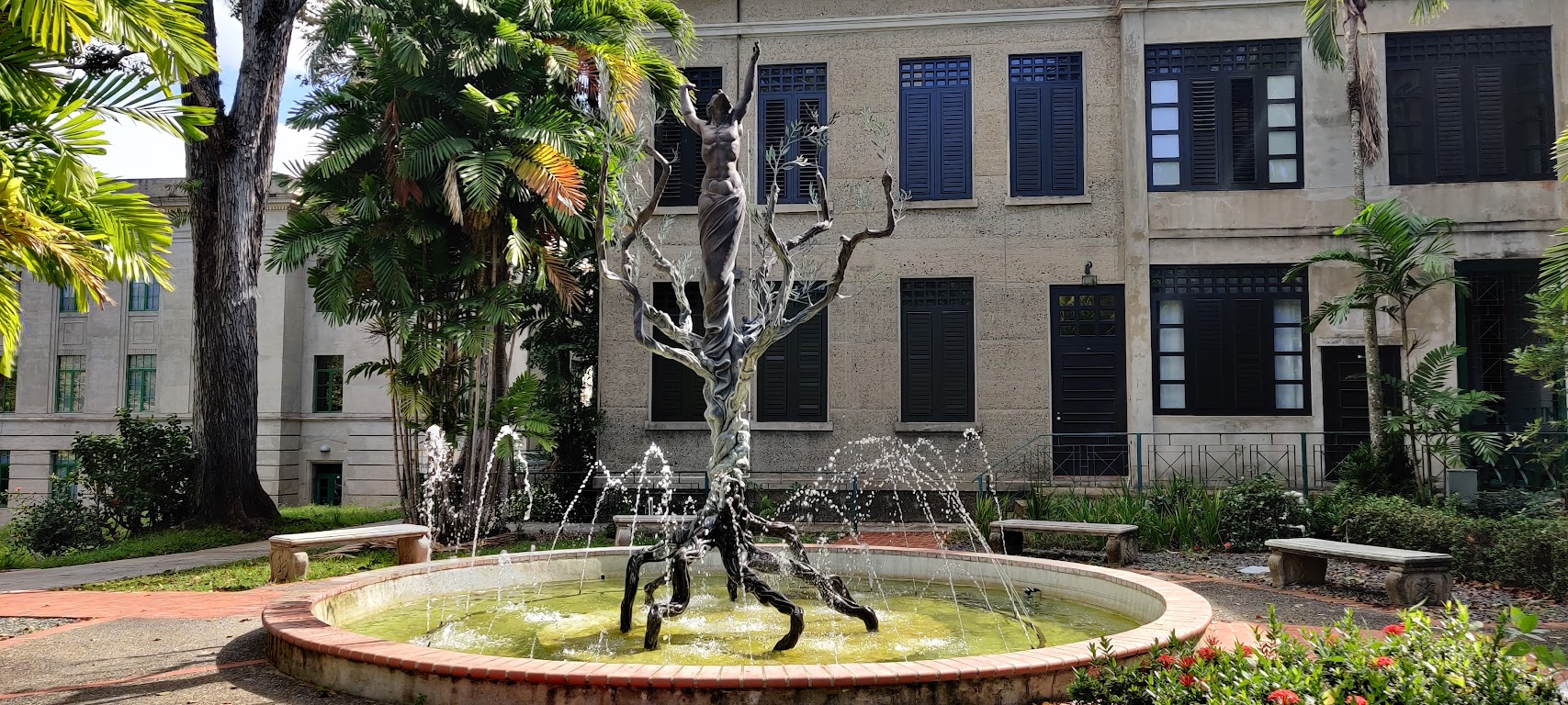



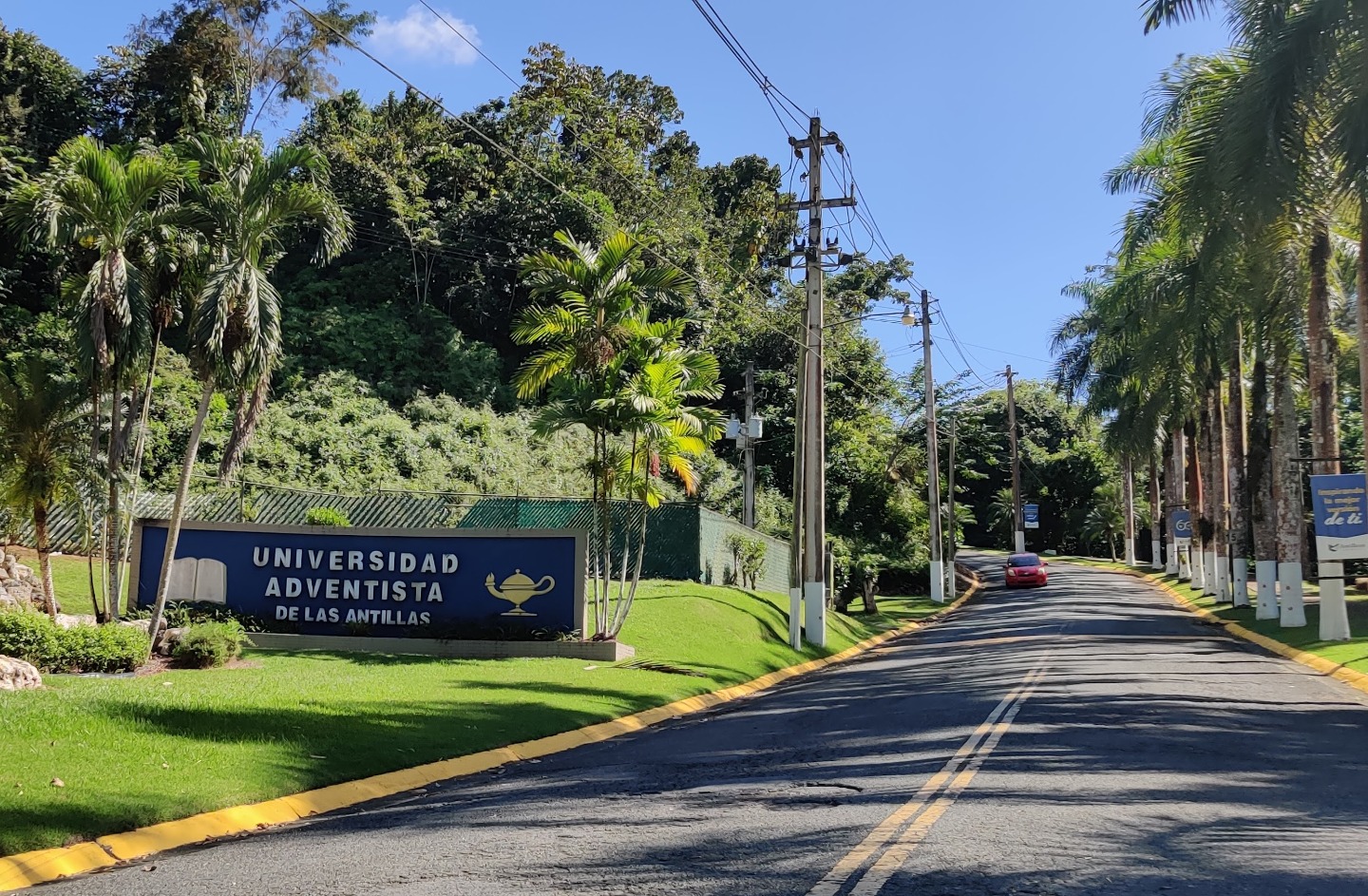
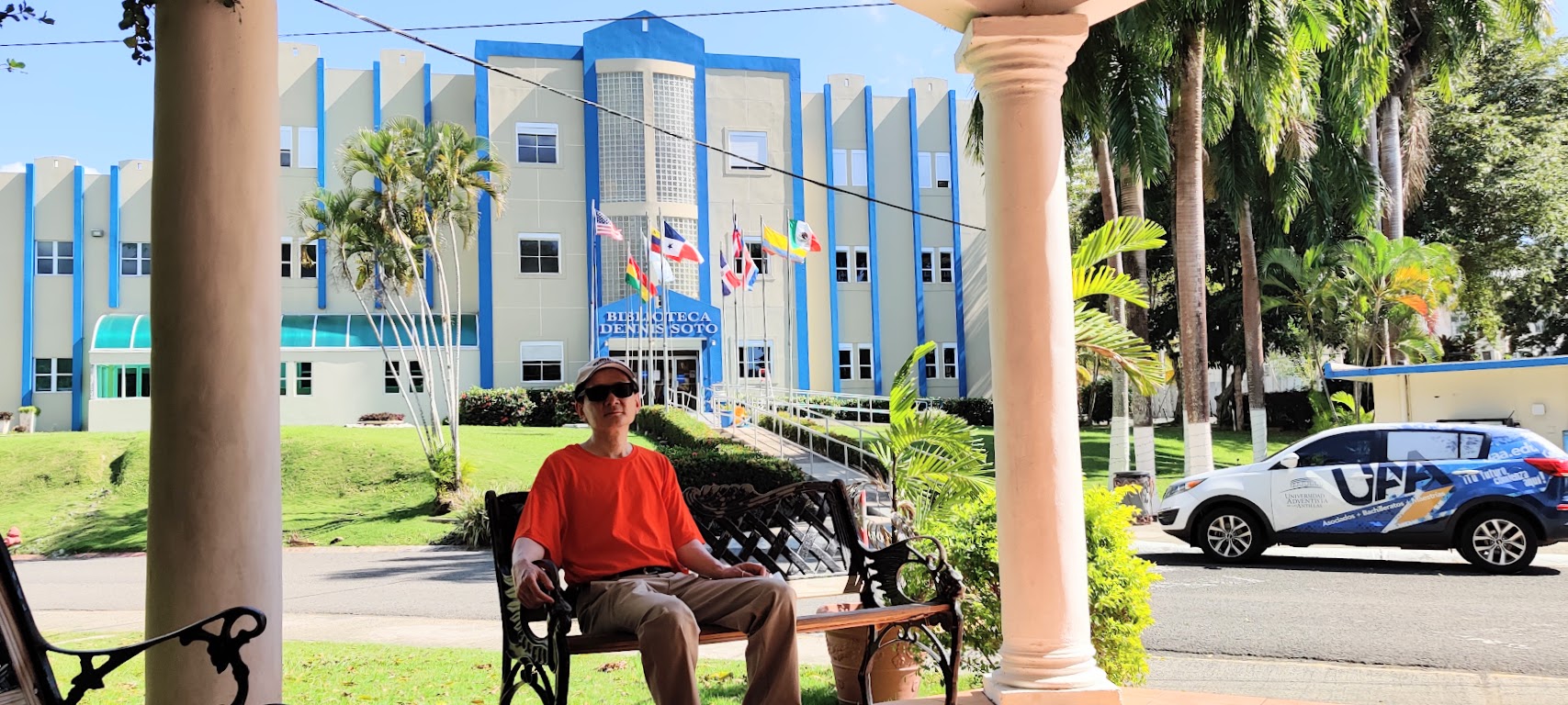

- Laboratorio Clinico Toledo, the private clinic where we got our Covid
shots
- Mayaguez city hall. The Christmas decoration declares: "Mayaguez, City
of God"
- University of Puerto Rico at Mayaguez
- Admin building, University of Puerto Rico at Mayaguez
- Carlos, a construction foreman, was a US Army veteran of 46 years, and
speaks fluent English.
- University of Puerto Rico at Mayaguez. The palm trees are very
impressive.
- Antillean University, an Adventist school.
- Antillean University. May I take off the mask for a sec?
- Our hotel in Mayaguez is steps away from the city center, and used to be
a convent.
2. Sugar and Economy
In Castillo Serrallés, the
vacation house of the Serrallés family, in Ponce, our
tour guide were explaining “the secret of longevity” from the matron of the
house, who lived to 100 years old. Our little group consisted of two of us from
the States, and three young people from San Juan. These three being fluently
bilingual, the tour was conducted, for our benefit, and at their kind
insistence, in English only.
And that secret of longevity was “a Don Q every morning”.
Our tour companions laughed, but we didn’t get the joke. Our guide tried harder,
explained first that Don Q is a rum, and then the saying was a
self-advertisement. Only with much more time touring the rest of the house, and
extra help from our tour companions, did we understand that the owners of the
house owned the Don Q brand of rum, and the Don Q referred to Don Quixote.
The production of cane sugar, and subsequently rum, was a
major part of local economy. Sugarcane growing was apparently bad for the soil,
not to mention requiring hard labor. From 1970s the government bought out the
sugar production “centrales” (plantations) and
gradually shut them down, and now although Don Q Rum is still made in Puerto
Rico, the sugar is now all imported.
(Note: The idea of sugar industry’s demise is due to the
Puerto Rican government’s actions was first communicated to me by the helpful
young man in our tour group in Castillo Serrallés, and
can be found here as well. There are webpages that give different reasons
for the government’s actions, but none as reliable as the source cited above.)
The government’s design was to transform Puerto Rico’s
economy into a high tech one. This is partly happening, with pharmaceuticals as
one main type of product. But, one obvious question is, how successfully can
farm labor be retrained into high-tech workers? My guess: not very. The end
result is the poor was left behind, and became poorer still.
This reminds me of the Beijing city government’s actions to
“improve the images of the city” a few years back. “Unapproved” dwellings,
schools, shops and markets were closed overnight, and the migrants who lived,
attended and run them were chased out, in the bitter cold of Beijing’s winter.
“Low-end population” was perceived a problem, yet their welfare was not factored
in the solution.
Shutting down the Puerto Rican sugar industry sounds like
an attempt of gentrification of a country to me. (Let’s not argue whether Puerto
Rico is a country, or in what sense it is. There is too much of that already and
I don’t intend to add more to the mix.) It does not feel likely to be
successful, nor right.
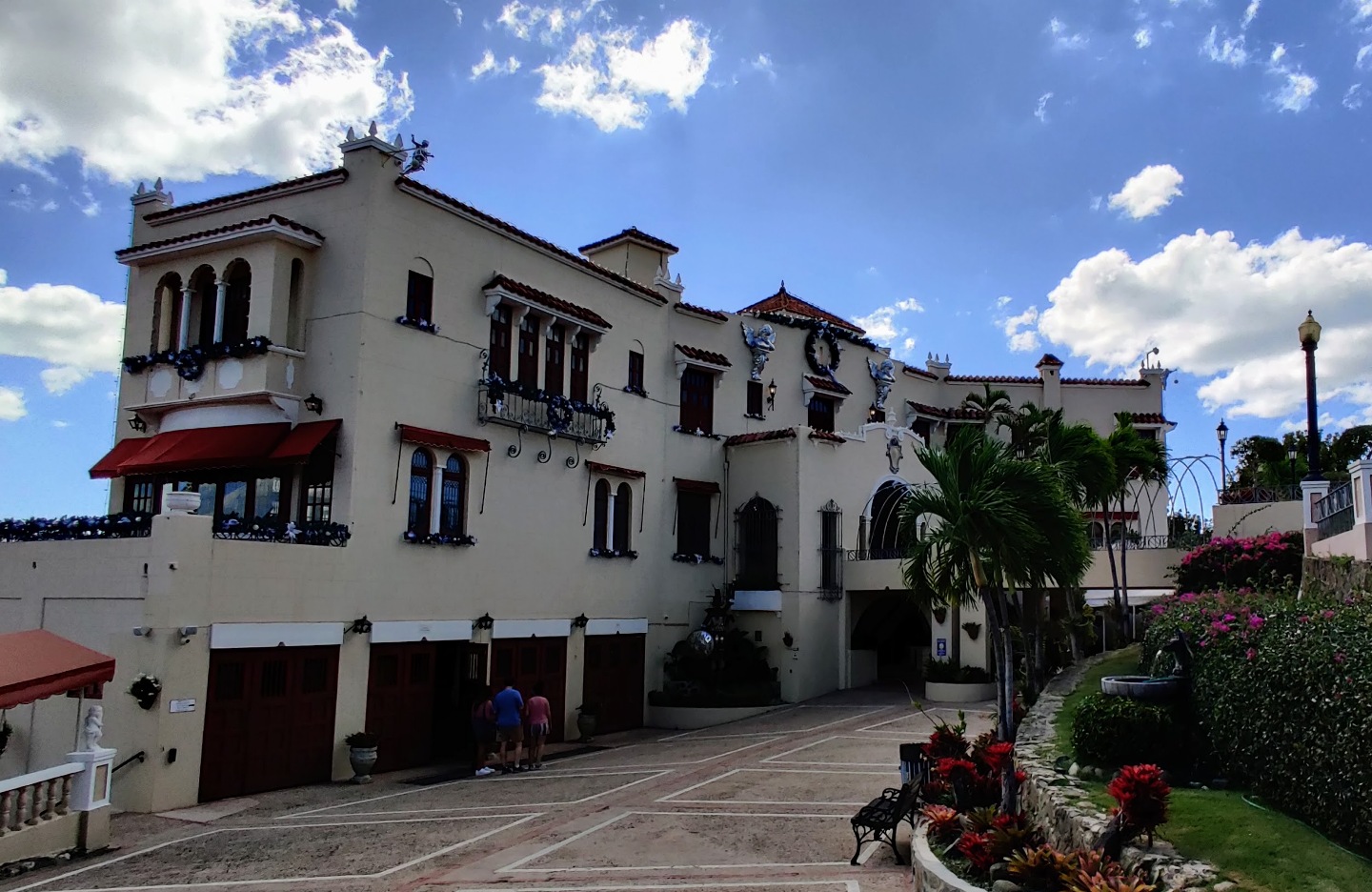
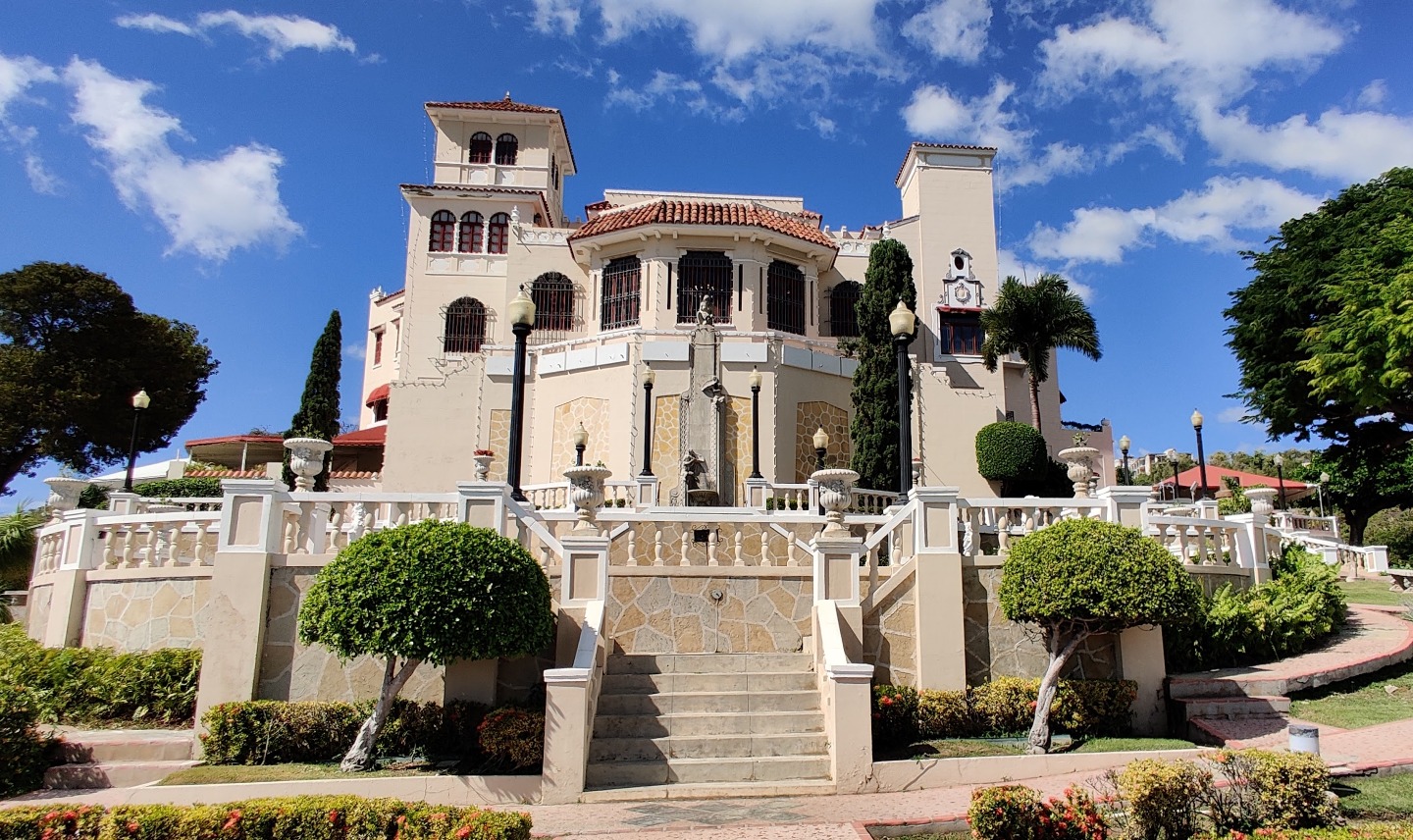

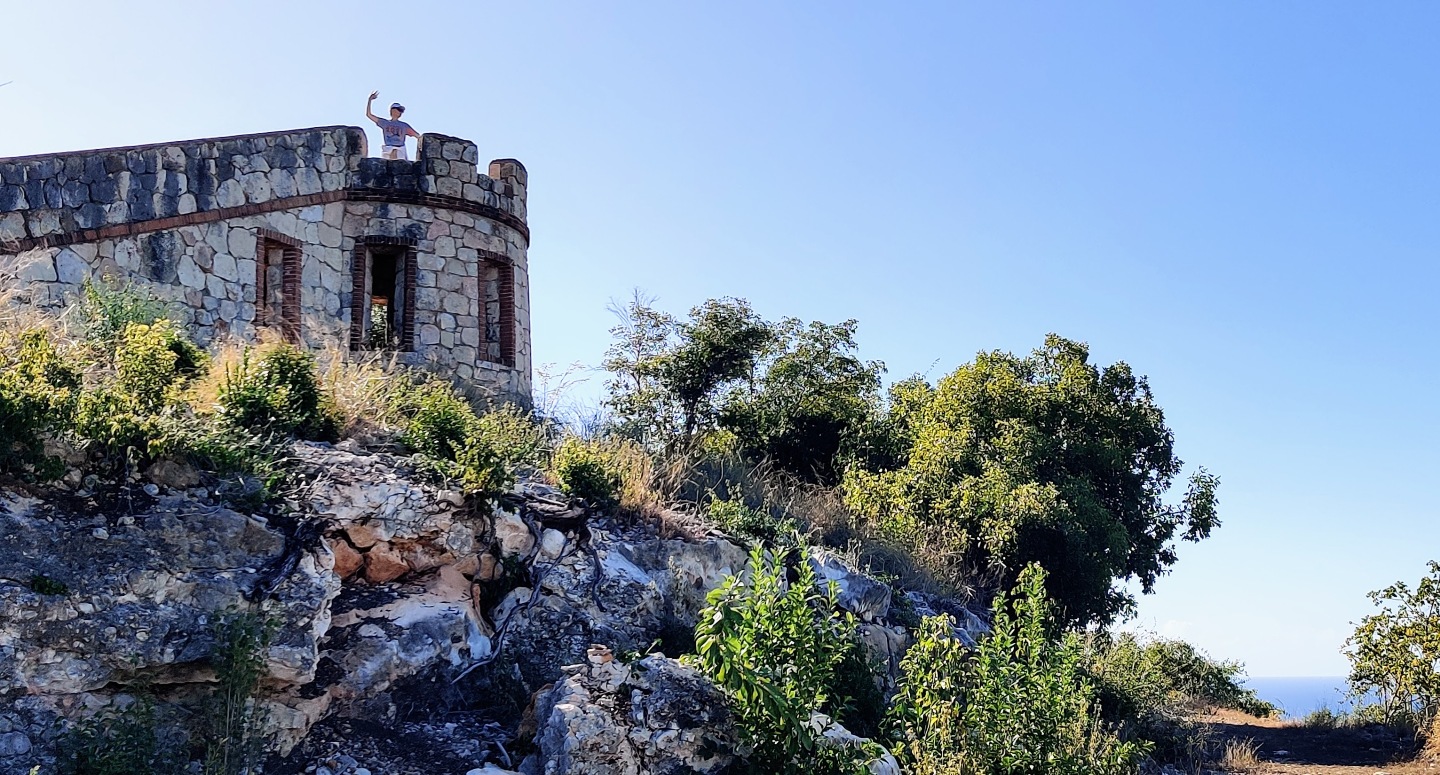


- Back of Castillo Serrallés. The carriage house is now
converted to ticket office and gift shop.
- Front of Castillo Serrallés.
- View of city of Ponce from Castillo Serrallés.
- Fuerte Caprón, an old fort in the Guánica dry forest.
- We didn’t see a lot of
uniquely local animal, but this Green Iguana is a
real beauty.
- Many restaurants and other stores are of the same brands as in the
States. Here you can see Taco Bell, KFC and Wendy’s.
3. Race Matters
When I got my Uber Eats delivery in San Juan, I was
supposed to give a four-digit code to the driver, to prove to the system that
the food was given to the right person. The driver was able to recite the
numbers back to me, but wasn’t able to get the system to accept it. After a
couple of tries, I pronounced the digits in Spanish. I didn’t do it earlier
because I was not super confident with my Spanish. But seeing the difficulty the
young man had with my English digits I thought I’d give it a try. And this time
it worked.
In the three days in San Juan I noticed that the Uber
system is segregated. Those who drove passengers (the “normal” Uber drivers)
tended to have lighter skin color, drove better and newer cars, and generally
spoke English, some very fluently, others harder to tell, due to their not
speaking much. Those who delivered food for Uber Eats were of darker complexion,
drove older and sometimes not-in-good-condition cars, and might not speak
English, at least according to the Uber Eats app. This particular Uber Eats
driver was the only one who couldn’t handle the English digits—although he could
pronounce them perfectly fine.
Agnes recommended this paper to me during our PR trip:
‘Racialization works differently here in Puerto Rico, do not bring your
U.S.-centric ideas about race here!’ In it, the author, Prof. Hilda Lloréns
of U. of Rhode Island, of Puerto Rican origin and with mixed-race parents,
explained that while it is true that in PR there is more of a spectrum of skin
colors, compared to the States, it is not true that there is no racial
discrimination. While there is not an as-easy-to-distinguish race demarcation,
those who have the darkest skin, like Prof. Lloréns herself and her mother, do
feel racial bias against them. As an example, Prof. Lloréns her mother, a black
woman, being discriminated against by the relatives of her father, a white man.
While that was instructive, her descriptions did not give me the impression that
either her parent was of a mixed race. Her thesis was more about racial bias
felt by people of mixed race, like herself and her siblings.
Some questions that came to my mind, and I imagine came to
Prof. Lloréns’ too, but were probably too sensitive for her to touch upon, were:
- Did she, who is darker, and her lighter-skinned siblings have
different feelings about the race relationship in PR?
- Did her lighter-skinned, but similarly mixed-racial relatives
treat her the same as other dark-skinned people?
- Did her education (she got a PhD) and her teaching position in a
University get her preferential treatment, from people who got to know her? In
other words, how much were the multitude of issues she discussed racially based,
instead of commingled with other factors?
Back to the Uber observation. I could be naïve, but I don’t
think Uber decided darker skinned drivers should drive for Uber Eats, while
lighter-skinned drivers should drive passengers. It’s more likely the
segregation is due to their financial situation, and their ability to speak
English.
It’s not easy to change a society or government’s systemic
bias against a race, but it is even harder to change the behavior of individuals
in ways laws do not apply.
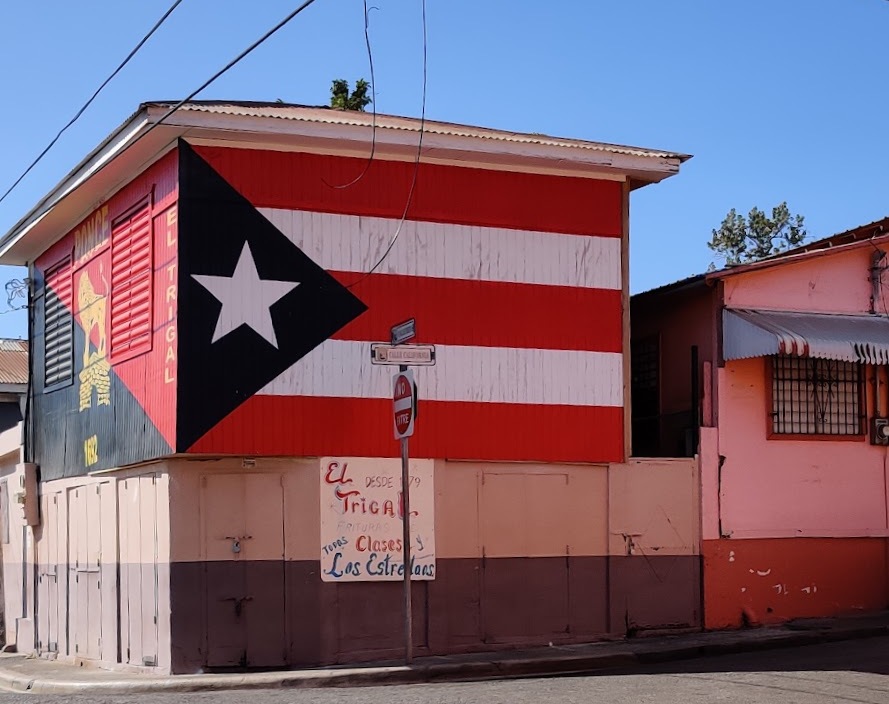
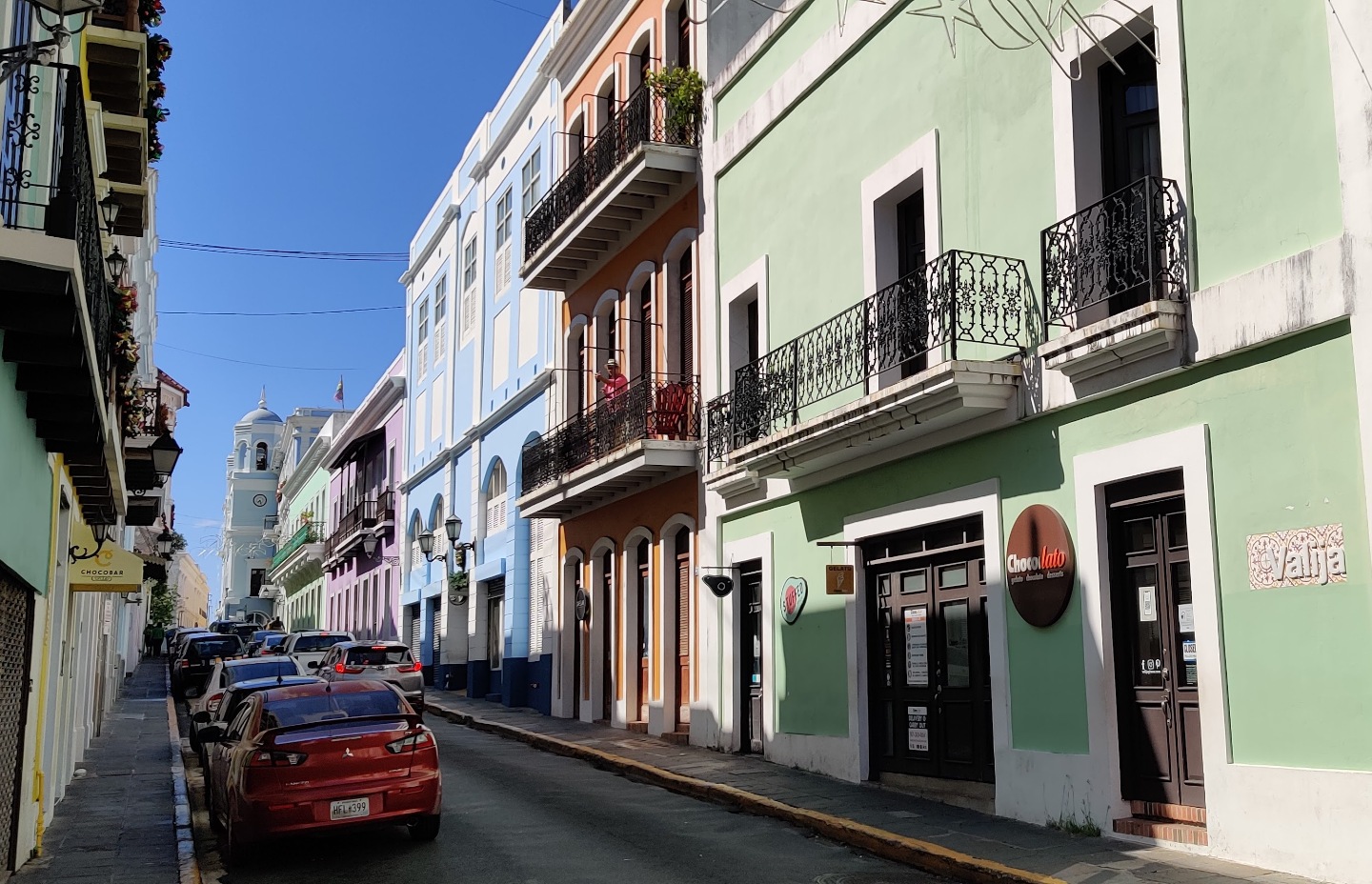
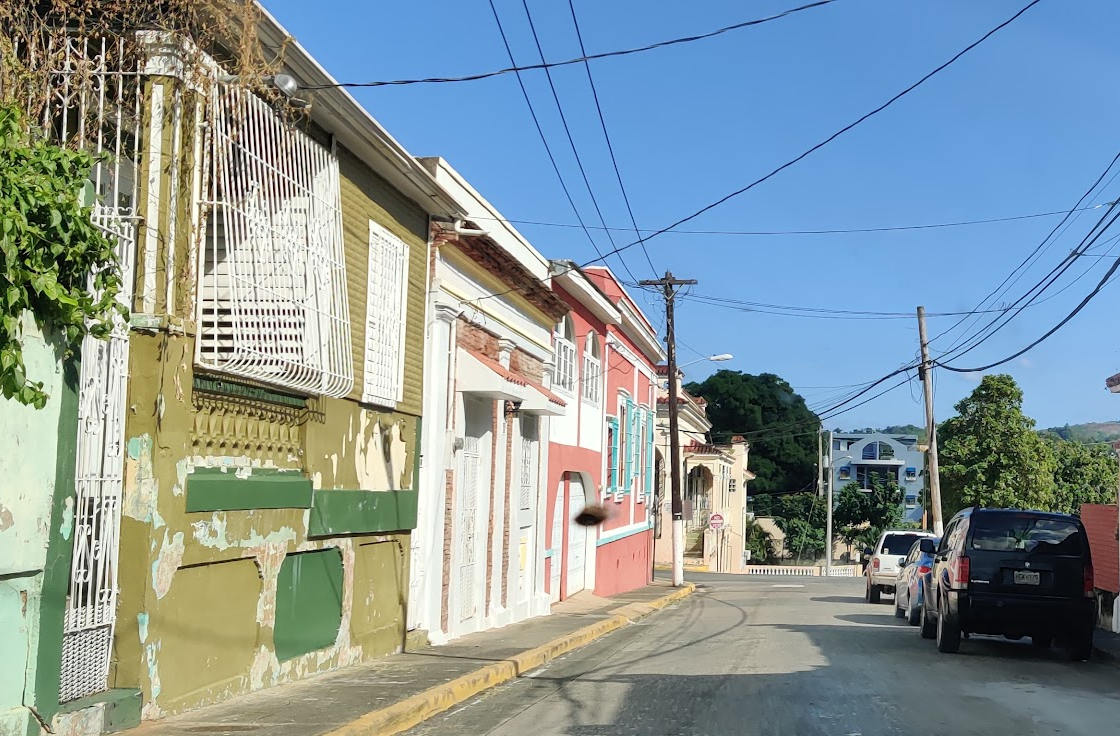

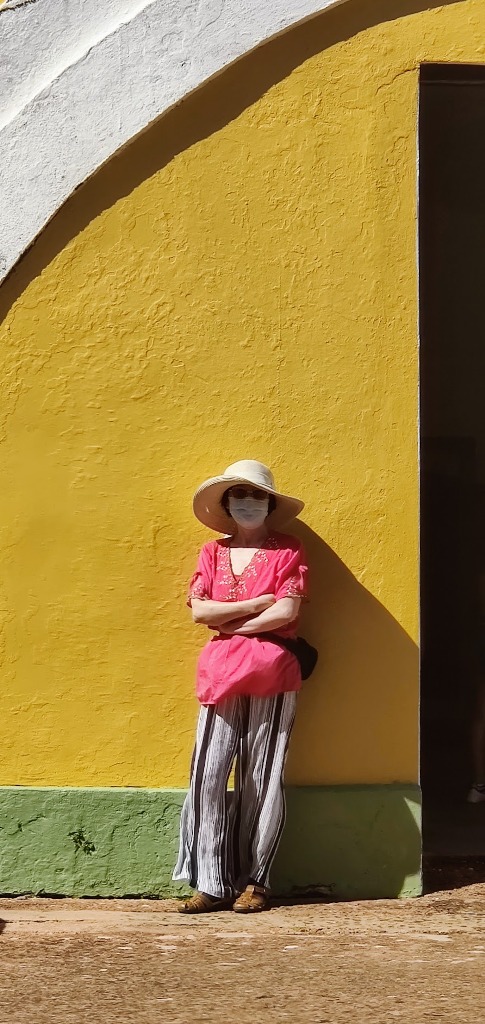
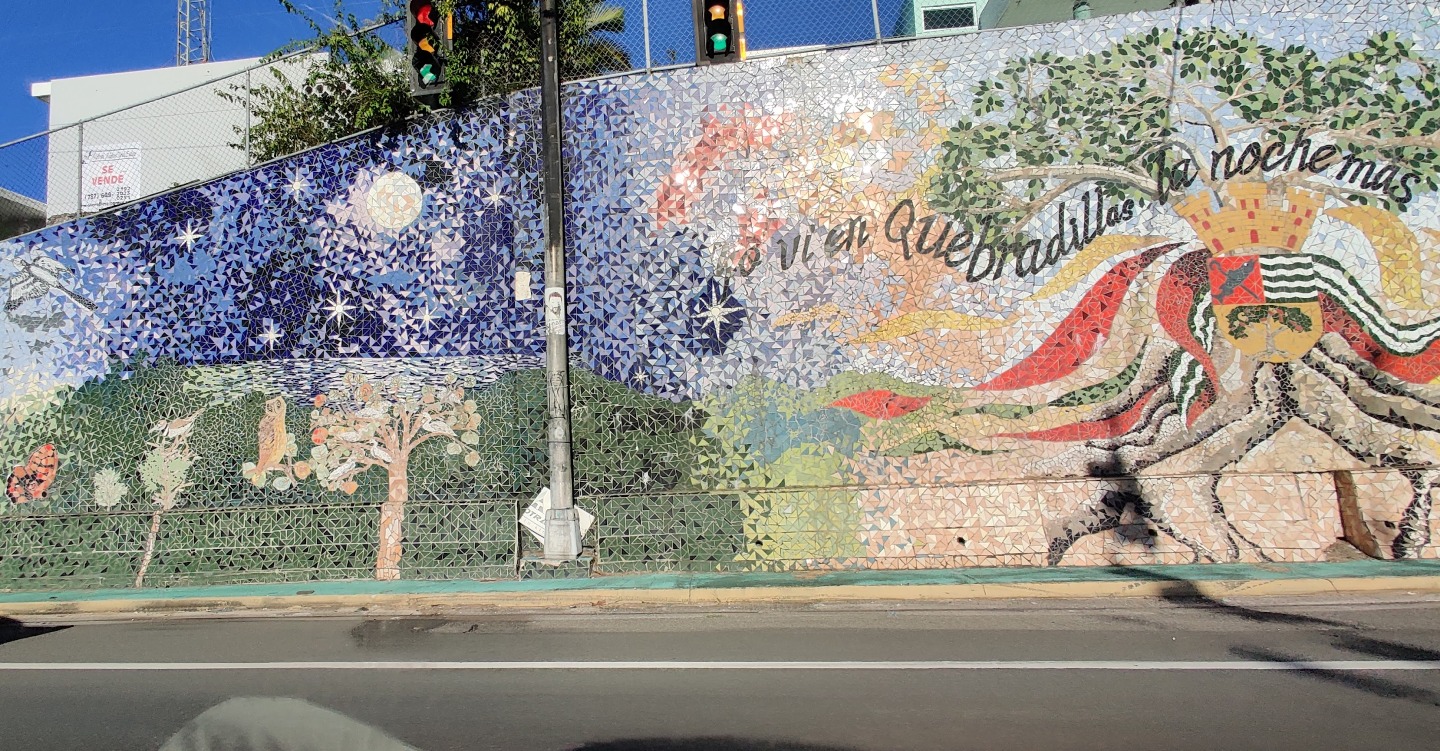
- A house proudly displaying Puerto Rican flag on its wall.
-
A nice neighborhood. Notice the beautiful lacework, and the bold colors of
the walls.
-
Even a house in need of repair has pretty colors.
-
A mural in a residential area.
-
Blending in. 😂
-
A mural on a major thoroughfare.
4. Government
We rented a room in a private residence in San Juan,
because the hotels were exorbitantly expensive. The room was nicely furnished
and air-conditioned, but the neighborhood did not inspire confidence. The
streets were so badly pot-holed that in places it was not possible to find a
flat path to pass, no matter how hard one tried. The walls of many buildings
were overtaken by graffiti. And the better maintained houses, including the one
we stayed in, were protected with one or more layers of steel bars. It’s in this
environment we ordered Uber rides and Uber Eats deliveries. It just didn’t feel
safe to walk on the street. Yet we didn’t know the true danger of the place.
On the morning of our departure, we had to leave before
daybreak. Sitting directly behind the driver, I didn’t realize what happened
before our Uber driver drove in reverse gear up the one-way street for quite
some distance, in order to take a different route. He explained that that road
was blocked by a few upturned garbage cans, a signal that the area was being
used for illicit drug trade. This apparently happened regularly, at the same
locations, the better to facilitate the business transactions in question. And these
activities are well organized, with the police bought off.
The pot-holed roads and lack of needed policing may be
signs of a government that is broke. In the financial sense. The PR government,
not having the sovereign power of a state, could not declare bankruptcy. And the
US congress has not found it necessary to bail out PR. Instead, it passed a
special law for PR to enter bankruptcy. In January 2022, after our return to the
States, a federal judge gave approval to a plan for the government to exit the bankruptcy. Maybe
PR will see better government services soon.
Congress have authorized a
few plebiscites in the past, but the outcomes were inconclusive. The choices PR people can make are: becoming
fully independent; becoming mostly independent, but remain in a
“free-association” with the US, to enjoy certain benefits—such as the protection
of US military; to become a US state, or to keep the status quo. In the early
years, independence was the most favored choice. Lately, it has been statehood.
But the plebiscites were never conclusive, with one clear majority choice, so
the status quo prevailed.
With the status quo, PR residents have US citizenship, do
not have a vote in presidential elections, nor do they have voting
representation in congress. But they are also exempt from most federal taxes—so
one can’t easily say “taxation without representation”.
Back in Castillo Serrallés, when
I thanked the young man from San Juan for being so accommodating, he said,
laughing: “we understand we are colonized.” That’s not how I understood it, and
it did not agree with what we saw. All this trip, we got to know the background
of maybe a couple dozen people, and interacted with countless more who were
obviously local, but only met one who moved to PR from the states without
apparent local ties.
When PR was ruled by Spain, the local Taino population was
wiped out and replaced with Spaniards or people of other countries of origin but
willing to swear allegiance to the Spanish Crown, and a large numbers of slaves from Africa. When the US took control, no
similar policy was enacted.
From this short trip, and the homework done before and
after, we felt we learned quite a bit about PR. We don’t feel that we’d move to
PR, even with the tax incentives from the US congress and the PR government. 😉



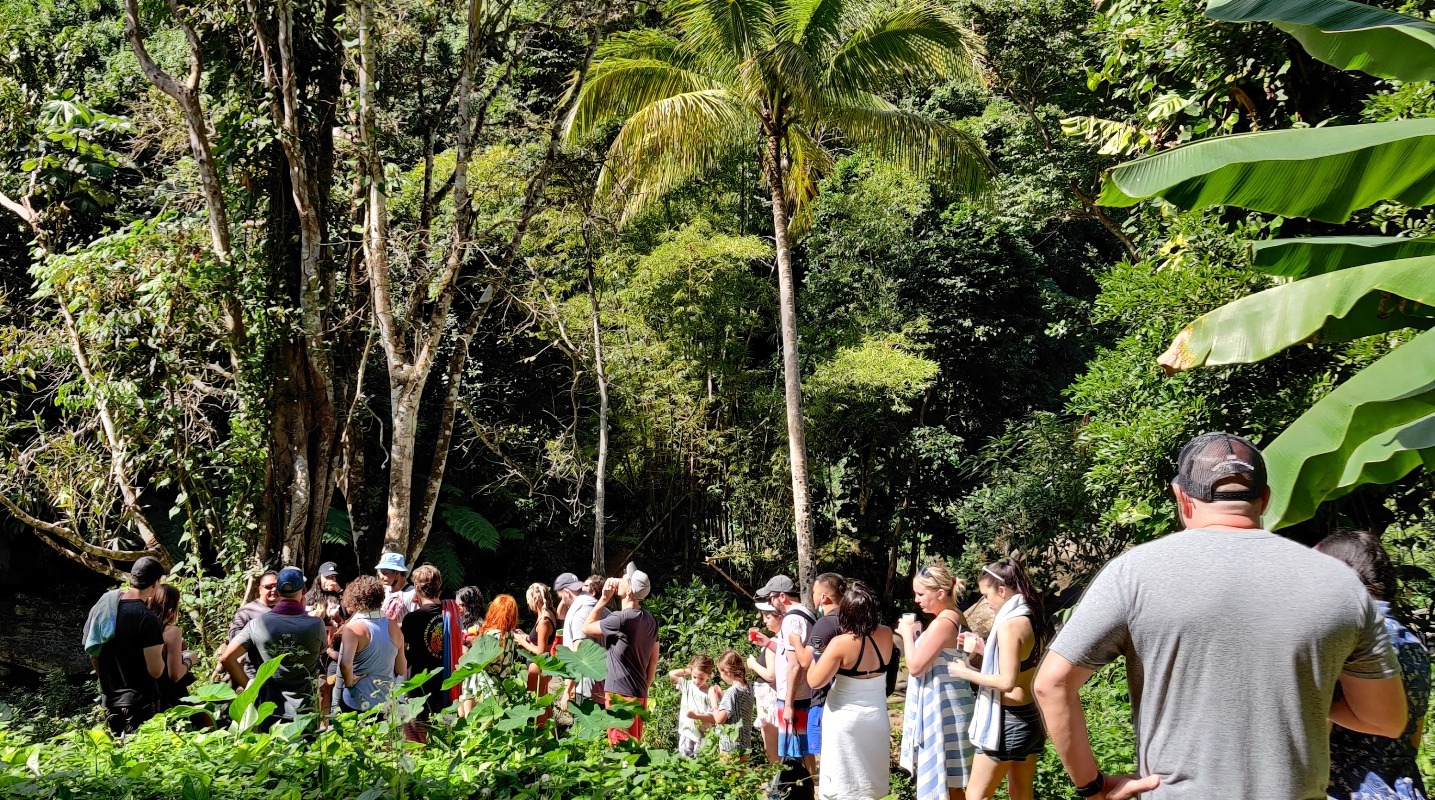
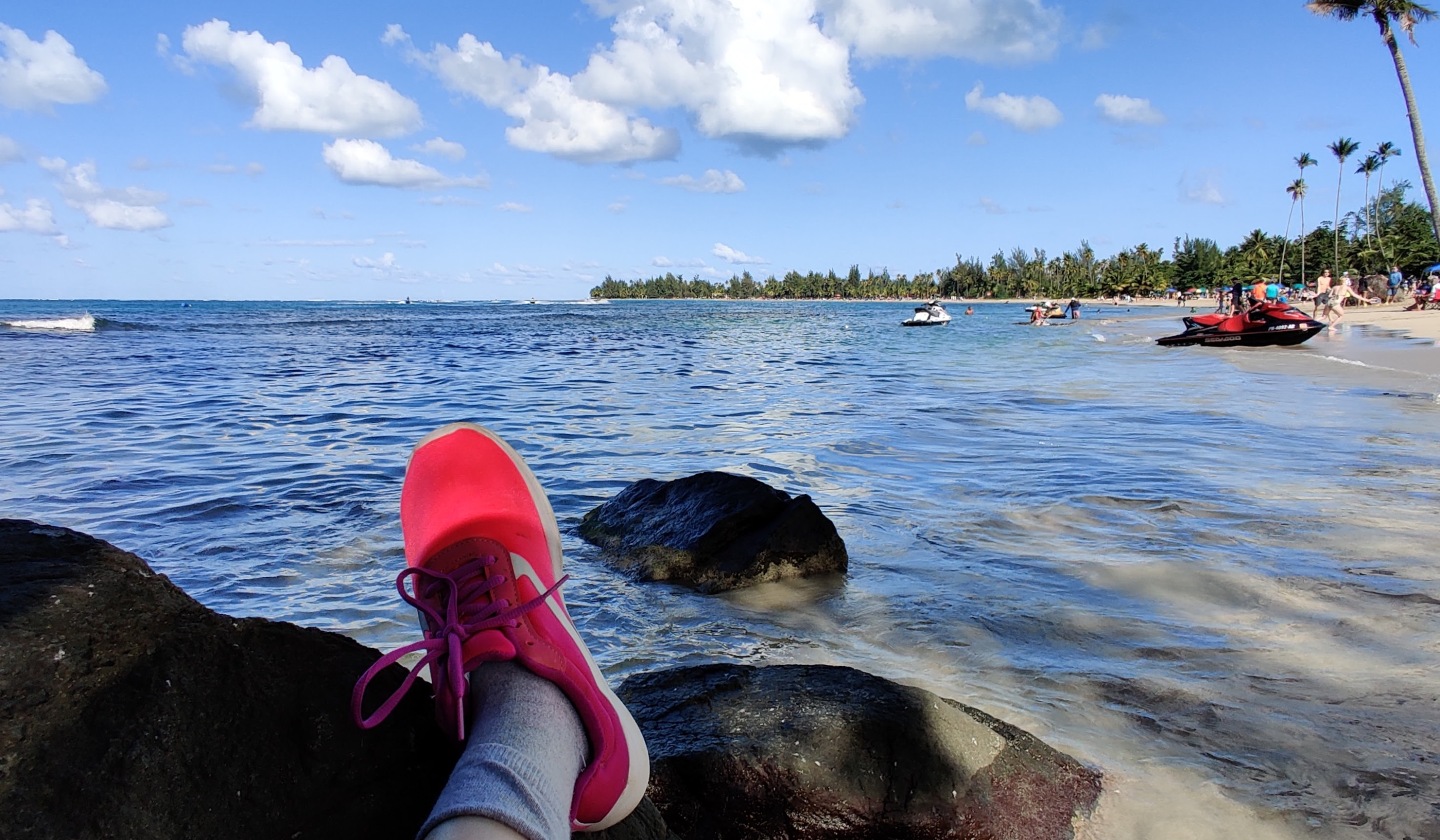
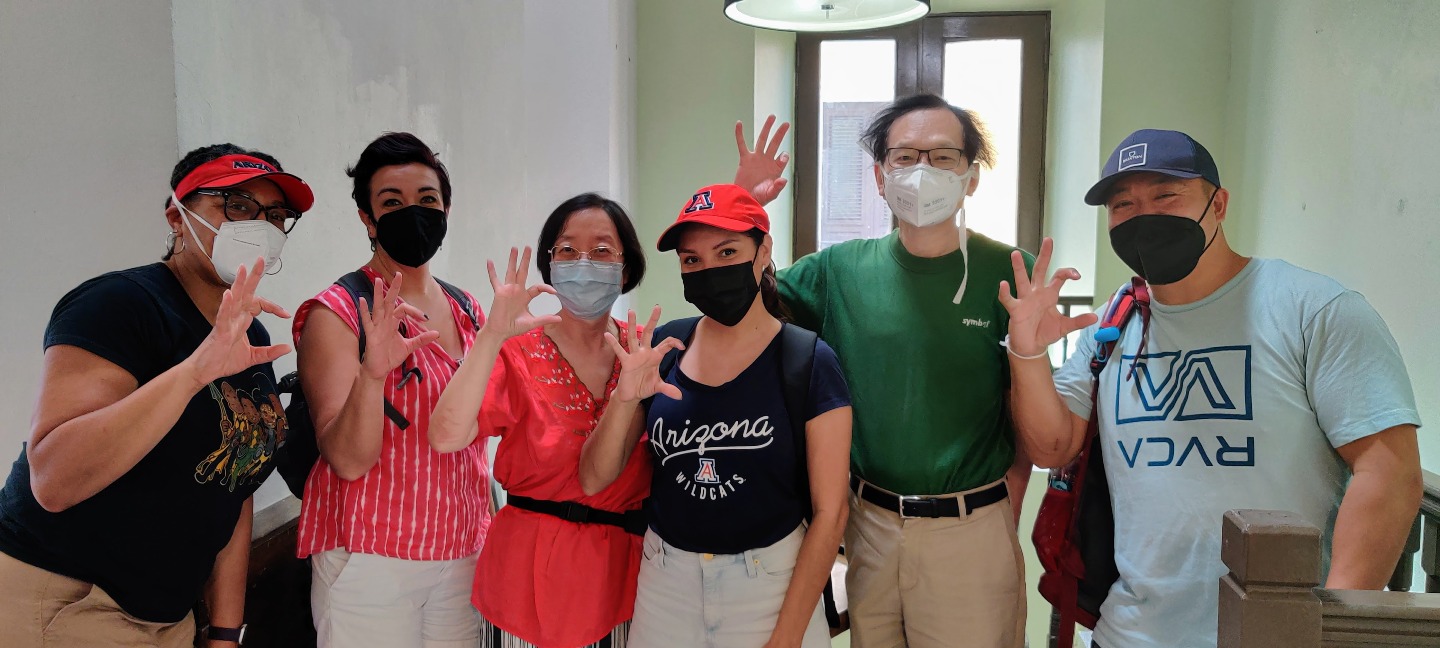
- Castillo de San Cristobal is a fort to defend against attacks from land.
It is part of Old San Juan, situated on a tiny island. The buildings in the
distance are on the main island of Puerto Rico.
- Castillo San Felipe del Morro is a fort to defend against attacks from
the sea, also in Old San Juan. These forts are administered by the US
National Park Service, where the written material is always bilingual, in English
and Spanish.
- El Yunque rain forest, where I took a quick dip. The water was rather
cold, even though every day in Puerto Rico we needed to run the AC through the night.
- The tour guide of our sister group explains the local life, the economy,
and the natural disasters PR suffered.
- Chilling off after lunch at a beach near El Yunque.
- Chance encounter of a group of educators from U of Arizona, who were
leading a student tour to PR. They taught us the U of A Wildcats sign.


























